Introduction:
This presentation describes the development of an HTRF® assay for the detection of Hepatitis B “e” antigen (HBeAg) recombinant protein in partnership with FORMULATRIX® using the MANTIS® Liquid Handler. The use of MANTIS® increases workflow efficiency, allowing for more conditions to be analyzed while saving time and reagent cost, in addition to generating reproducible, error free results. The MANTIS® Liquid Handler allowed Cisbio to complete all assay development steps (ie. best pair analysis, conjugate optimization, etc.) significantly faster when compared to traditional dispensing methods.
The MANTIS® Liquid Handler automates microfluidic liquid dispensing to as low as 100 nL, enabling efficient and reproducible assay optimization. The ability of the MANTIS® to dispense low volumes across different microplates into any well allows researchers the ability to assess assay performance against gradients of concentrations and volumes in any 384- or 1536- well microplate. This functionality, along with CVs less than 3% and a dead volume of 6 µL, makes the MANTIS® an ideal solution for quickly and efficiently finding optimal conditions for HTRF® Assays.
Selection of rProtein and best antibody pairs
Twelve commercially available antibodies were labeled with HTRF® dyes and coupled in 36 antibody pairs to assess their ability to detect the recombinant protein HBeAg. Recombinant proteins (rProtein) from 2 suppli-ers were tested for 3 different concentrations (500, 50, 5 ng/mL) in order to find the most fitting one for our assays. rProtein from supplier 1 presented no relevant signal, therefore it was not investigated further in the next steps of this study.

Thirteen antibody pairs showed significant signal when tested with rProtein from supplier 2 (Figure 1). Among them, the top 4 pairs were selected for the next assay development step – antibody pairs optimization (Figure 2).
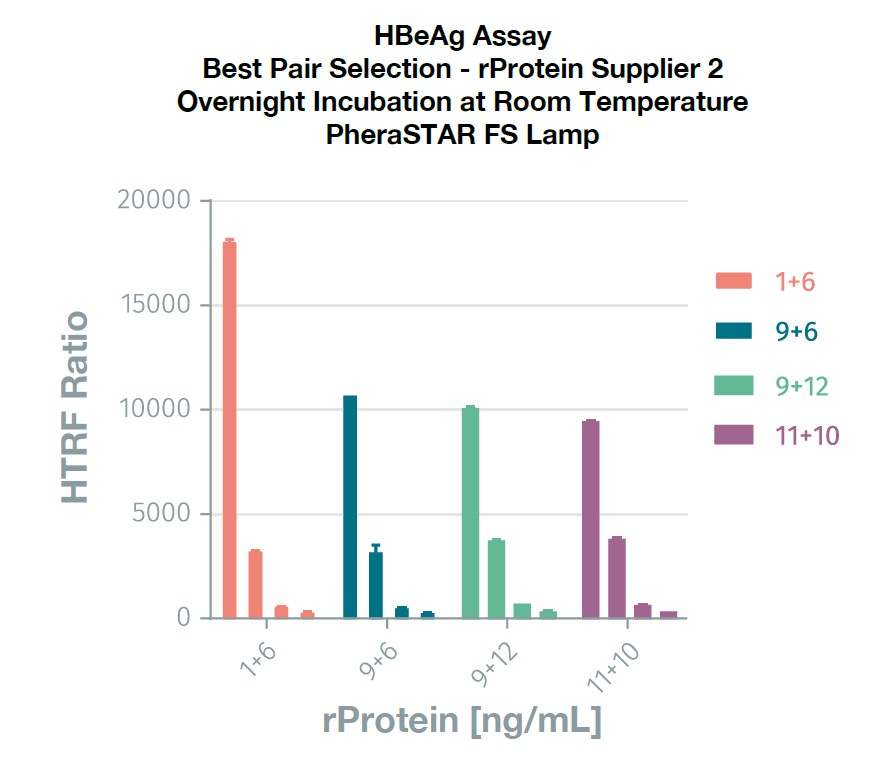
Antibody pair optimization
The MANTIS® allows for the investigation of multiple antibodies at once, with that in mind we chose to work on 12 anitbody pairs. Here we used it to optimize each selected pair in a single step. Pairs 1+6, 9+12, 9+6 and 11+10, were optimized using the following configura-tion: Antibody-donor (D) and Antibody-acceptor (A) tested in 3 different concentrations in a matrix approach. rProtein concentrations started at 2000 ng/mL and were followed by 2-fold dilutions. rProteins and antibodies were dispensed in a white low volume 384-well plate in a 16:2:2 format (16uL rProtein, 2uL of each antibody). The 2 best pairs were narrowed down from the 4 potential pairs selected. These pairs are the best compromise between dynamic range (1+6; figure 3.A) and sensitivity (9+12; figure 3.B).
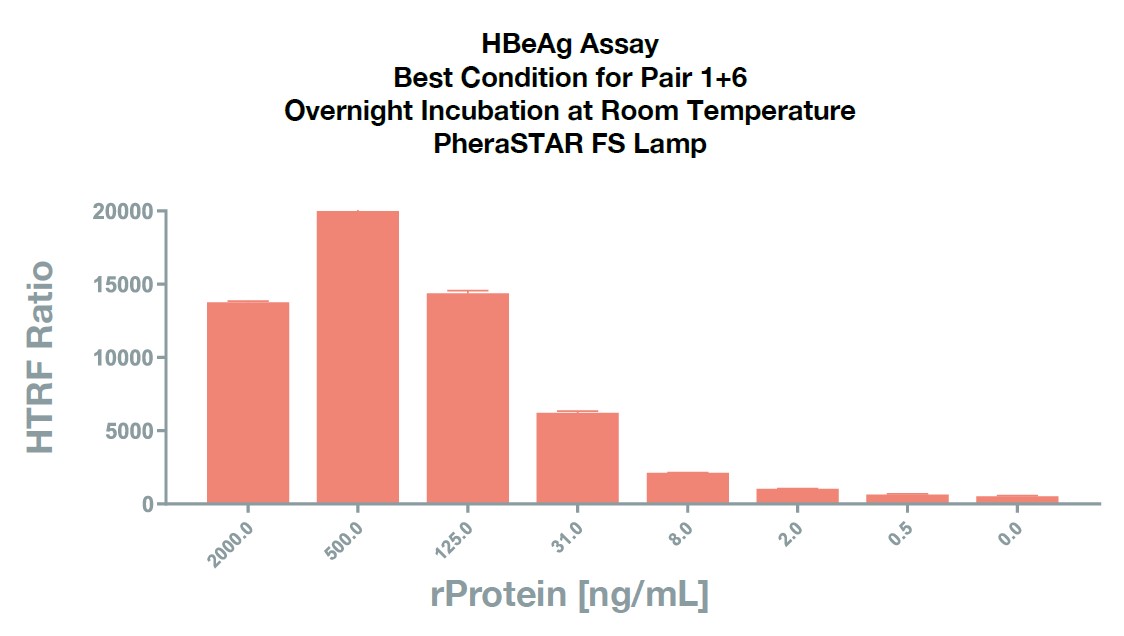

Media effect
The following experiment was run to assess the effects of cell culture media over the 2 selected antibody pairs 1+6 and 9+12. Both pairs were tested in concentrations starting at 500 ng/mL, followed by 2-fold dilutions in diluent, RPMI, or DMEM. rProtein dilutions and antibod-ies were dispensed in a white low volume 384-well plate in a 16:2:2 format (16uL lysate, 2uL of each antibody). Very little to no effect was observed when RPMI was used in the assay for pair 1+6 while DMEM had a larger impact. Low effect was observed when cell culture media was used for pair 9+12. Although this pair presented a lower signal, it was selected as the single best pair for the detection of hepatitis B “e” antigen rProtein for its better sensitivity over pair 1+6.
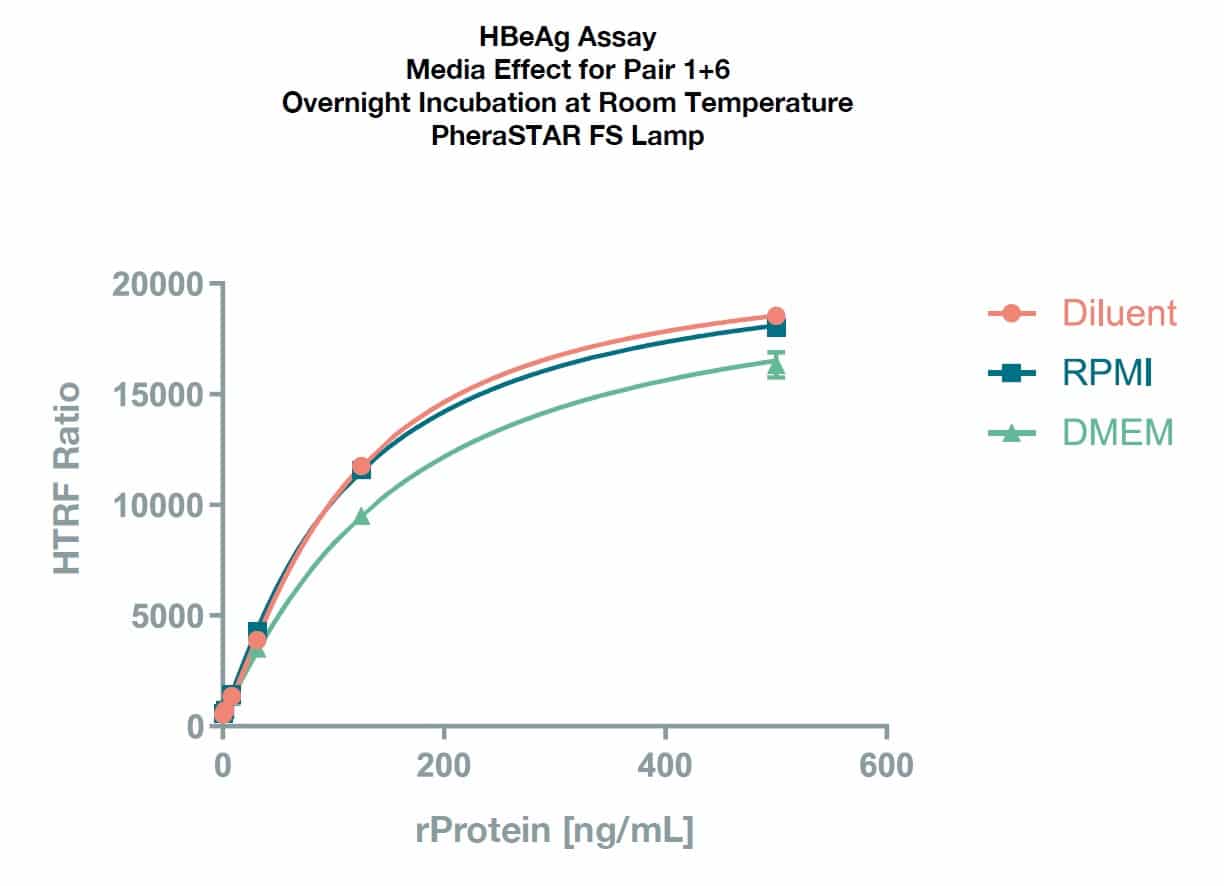



Assay reproducibility
The assay was assessed for reproducibility and a standard curve was drawn to investigate its dynamic range. Various concentrations of rProteins were incu-bated with the antibody pair 9+12 overnight at room temperature for this experiment (Figure 5).
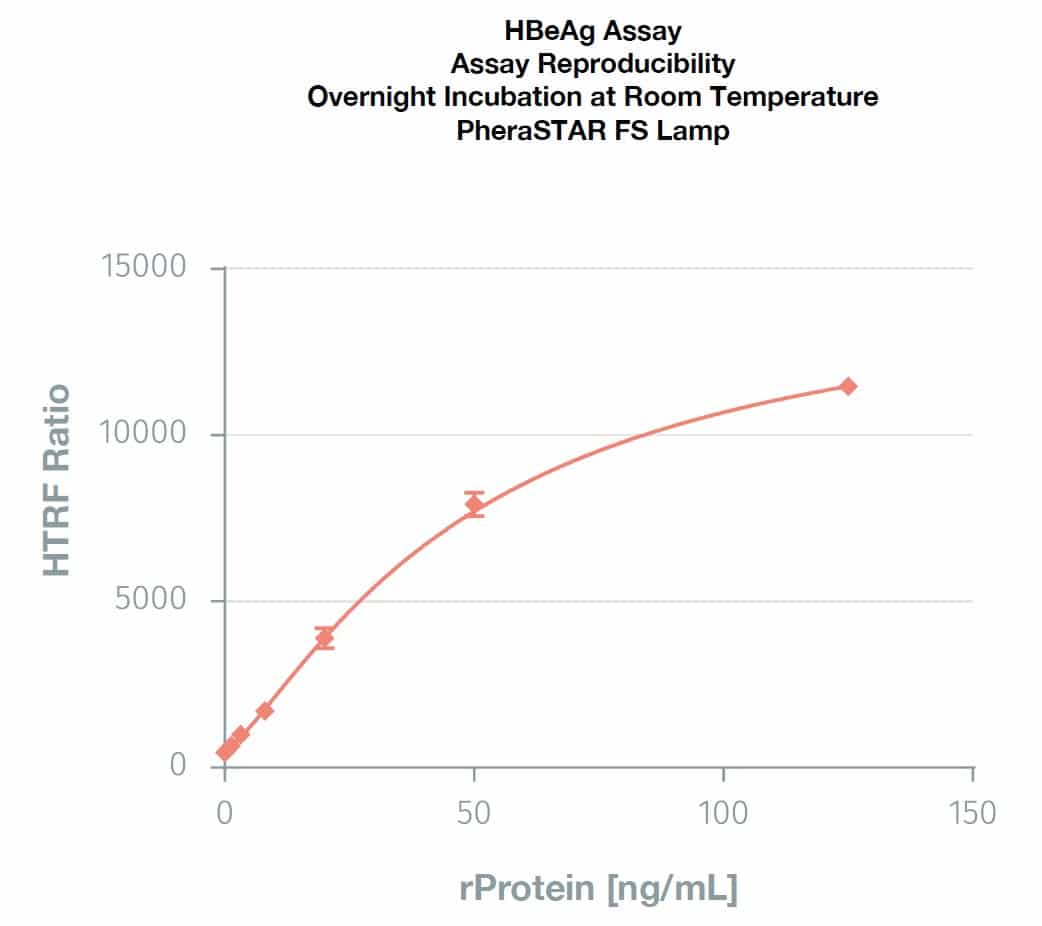
The assay showed great reproducibility and exhibits the following performance:
Dynamic Range: 0.5 ng/mL to 125 ng/mL
LOQ* = 0.5 ng/mL
LOD** = 0.193 ng/mL
*LOQ: Limit of Quantification (based on signal at 20% DF **LOD: Limit of Detection (based on Std 0 mean + 2 SD for 30 replicates)
Conclusion
The MANTIS® Liquid Handler from FORMULATRIX® proved to be an efficient dispenser to handle several experi-mental conditions at once and quickly develop and optimize HTRF® assays. The parameters of the assay resulting from its utilization were successfully identified and optimized from a significant number of options (2 recombinant Proteins, 36 antibody pairs, 2 cell culture media conditions) and made up for a sensitive and reproducible HTRF® assay.
CONTACT INFORMATION
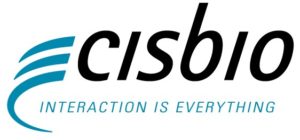
Europe and other countries +33(0)466 796 705
U.S. and Canada 1-888-963-4567
China +86 21 5018 9880
Japan +81-(0)43-306-8712
Visit www.cisbio.com to find a list of our regional distributors

